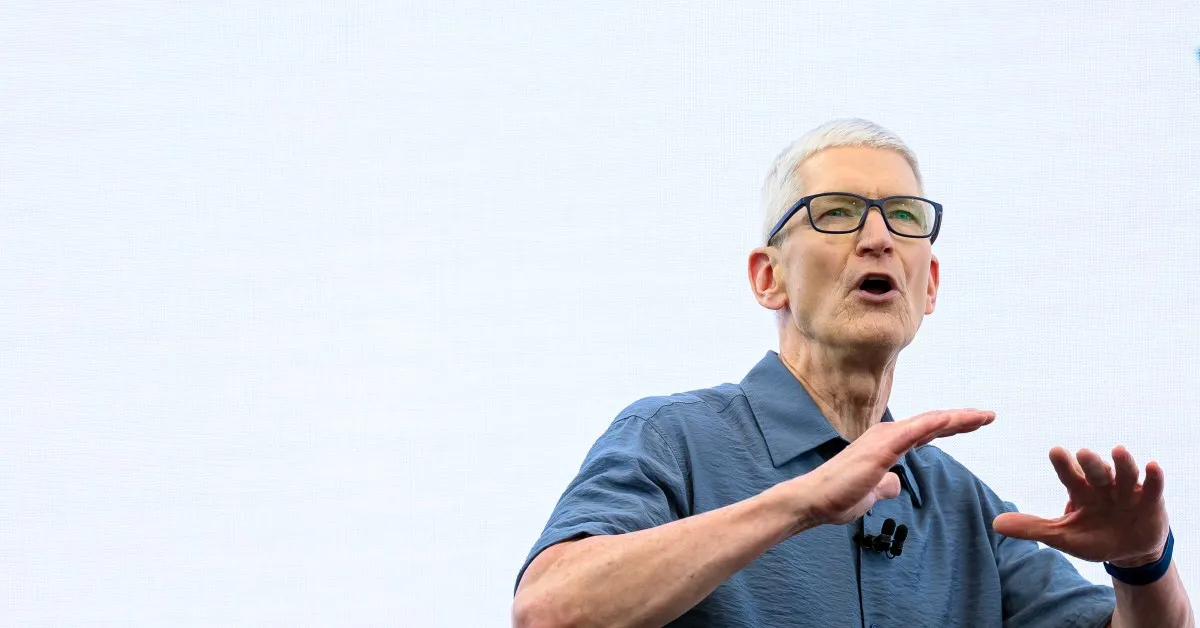
Once every decade, Apple ignites a wave of passionate reactions among its user base with a significant redesign of its software. This year, the tech giant unveiled its latest interface, dubbed Liquid Glass, which has sparked a flurry of mixed responses. Many users and tech enthusiasts have taken to social media to express their frustrations, questioning the clarity of the new translucent backgrounds that dominate the interface. “What’s the use of this cool new Liquid Glass design if you can’t read or see anything clearly?” one tech content creator lamented, highlighting the usability concerns that accompany aesthetic shifts.
It’s essential to note that the outcry surrounding the Liquid Glass design may be short-lived. Although Apple showcased the new look at its WWDC developer conference with great fanfare, the software is still in its beta-testing phase, which is expected to last at least three months. This means that users can anticipate adjustments and improvements to the design before its final release. History shows that similar redesigns have led to initial backlash; for instance, when Apple rolled out its last major redesign a decade ago, users were similarly resistant to change.
While the debate over the new Liquid Glass design rages on, it has not overshadowed the growing concern regarding Apple’s unmet promises in the realm of artificial intelligence (AI). Following last year's announcement of the Apple Intelligence suite, which aimed to integrate advanced AI features across its platforms, users have been left disappointed as many of these features have yet to materialize.
This moment is particularly precarious for Apple. The company’s Apple Intelligence suite has struggled to deliver on its promises, leading to dissatisfaction among users and investors alike. Features like AI-driven notification summaries have received mixed reviews, with some users finding them nonsensical. The highly anticipated Clean Up tool, designed to remove unwanted objects from photos, has also faced criticism.
Apple's flagship AI assistant, Siri, intended to be a more personalized experience, has not yet been released, leading to frustration among users who expected significant improvements. After months of delays, Apple acknowledged that key features showcased at last year’s WWDC would take longer to develop than initially anticipated. This has resulted in a growing sentiment of frustration, especially among customers who feel that they paid a premium for devices that promised advanced AI capabilities that are yet to be realized.
In response to these shortcomings, some consumers have taken legal action against Apple, citing false advertising linked to its AI features. The company has faced multiple class action lawsuits from plaintiffs who argue they purchased new devices specifically for the promised AI tools. This has led Apple to withdraw advertisements featuring the new Siri functionalities and to clarify the availability of these features on its website.
Apple executives are now under pressure to explain the slow rollout of AI features. Craig Federighi, Apple’s software chief, emphasized the importance of getting AI right, citing the need for a robust foundation built with user privacy in mind. In contrast, competitors like Google have rapidly advanced their AI offerings, showcasing their ambitions at their own developer conferences.
Google's recent developments in AI have highlighted a stark contrast to Apple's more cautious approach. The tech giant has made significant strides, including the introduction of its Gemini AI assistant, which is designed to perform various tasks efficiently. This has raised concerns among Apple users who are eager for similar innovations, suggesting that Google may emerge as a strong alternative for those frustrated with Apple's slow pace.
Despite the competition, many Apple users remain loyal, preferring the company's commitment to quality over speed. As Federighi pointed out, Apple’s philosophy has always been to wait and see what works best in the tech landscape before making its move. This strategy has led to innovative products like the iPod and the Vision Pro headset, but it also carries the risk of losing early adopters who seek cutting-edge technology.
As Apple continues to navigate the evolving landscape of AI and software design, it remains clear that the upcoming Liquid Glass interface will be a significant change for all users. While the debate surrounding its usability continues, it’s important to recognize that Apple devices have always offered a certain level of stability amidst rapid technological advancements.
For those who wish to minimize their interaction with AI, Apple still allows users to opt-out of many AI features. However, the Liquid Glass design is set to become a staple of the upcoming software updates for iPhones, iPads, Macs, and Watches this fall. As the tech world evolves, Apple’s ability to balance innovation with user preference will be crucial in maintaining its reputation and customer loyalty.
Stay informed on the latest developments in technology by signing up for our newsletter, User Friendly, to ensure you don’t miss out on future updates and insights!